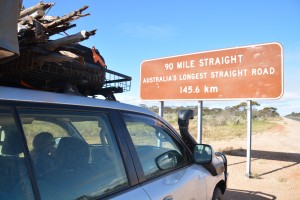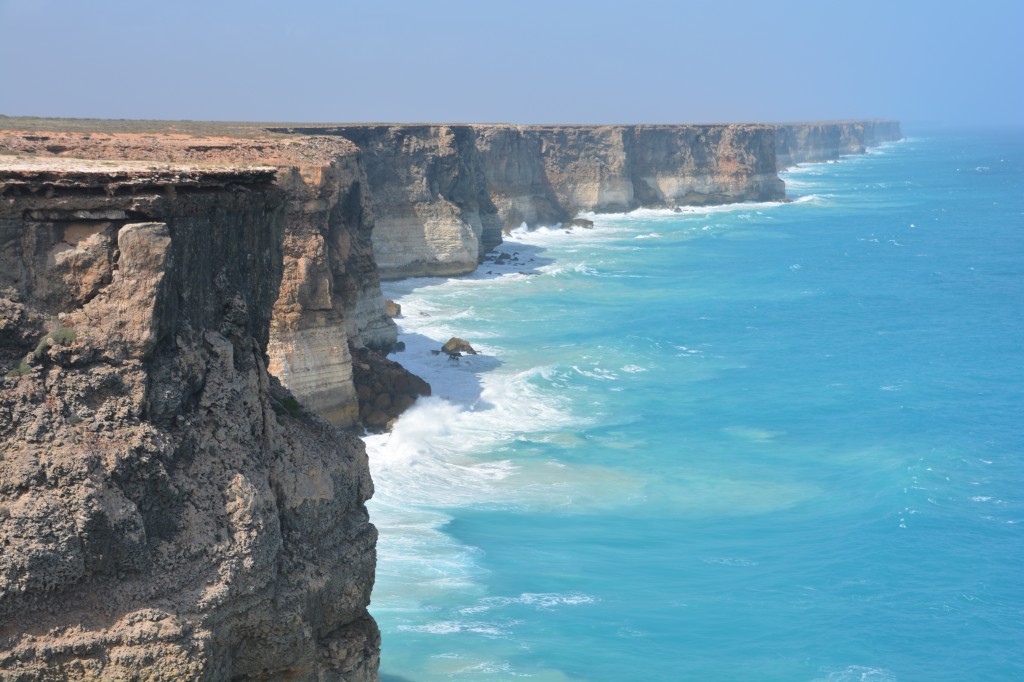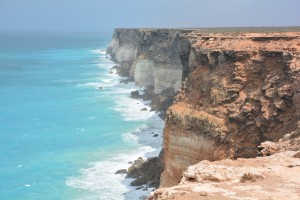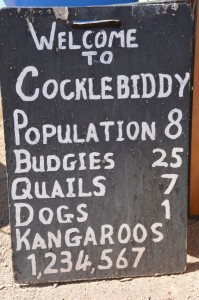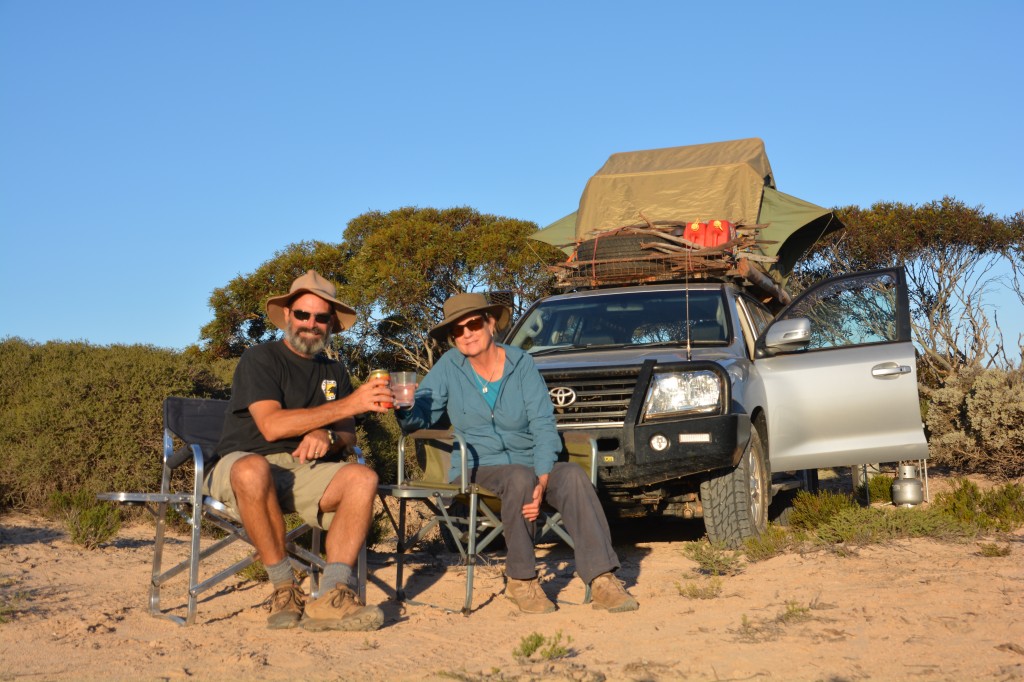Crossing the mighty Nullarbor
Of all the great Aboriginal words that mark the site of towns, places or things in Australia one of my favourite words was Nullarbor. It just has a fantastic ring to it and is great fun to say. And now we have the exciting opportunity to cross that vast desert plain across the south-central part of Australia referred to simply as The Nullarbor. Unfortunately we also learned that the word Nullarbor is not Aboriginal at all, it is derived from the Latin word for ‘treeless land’. Well, never mind, at least the description is apt!
The Nullarbor Plain is the flat almost treeless semi-arid expanse of land that lies immediately north of the Great Australian Bight, covers about 200,000 square kilometres and stretches for roughly 1,200 kilometres from Norseman in Western Australia to Ceduna in South Australia. It is said to be the largest single piece of limestone in the world and was once considered uninhabitable by Europeans. The first European to cross the Nullarbor was John Eyre in 1841 but today has very few full time residents and still remains today one of the most iconic components of the Australian outback.
Our journey across the Nullarbor was much less arduous than those early explorers but stretched over three days because we wanted to explore as much of it as we could on our limited time. So with a full supply of firewood and a full tank of fuel we headed out of Norseman on the aptly named Eyre Highway. And our old friend the Great Australian Bight, more enjoyably said with a fake broad Australian accent, was not far away. We camped one night in Eucla National Park amongst the sand dunes that separate the surf from the desert. We explored the beaches nearby and the old telegraph station that is being consumed by blowing sand. Not a friendly place.
The next day we stopped at numerous look out points that shot off from the main road to get good views of the Southern Ocean crashing into these high limestone cliffs, some of which reached over 100 metres high. The spectacular views from these lookouts were really one of those quintessential images of wild Australia and one of the real highlights of our journey.
Of course things are done differently out here. We stopped at a roadhouse not far from the South Australian border to learn we had entered a new time zone, Central Western Time, which was 45 minutes ahead of Western Australia time and 45 minutes behind South Australia time. But what is this, we’ve never heard of this, how can it be? Later Dr. Google told us that the locals in this region have ‘invented’ this time zone because they didn’t like the big 90 minute jump between WA and SA. So its not an official time zone and it covers probably only a couple of hundred people who live around here but its good enough for them so that’s the way it is.
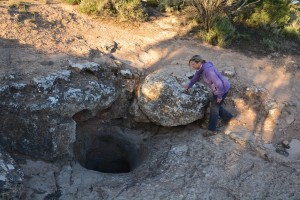
Julie bravely peering into one of the blowholes from the caves which are said to 'breathe' as cool air flows through them
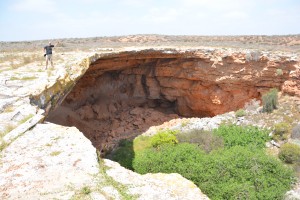
I am just a little speck standing on the huge overhang of this massive cave opening in the middle of nowhere
The Nullarbor is technically not a desert because beneath it there are huge caves, some with water, that run through the limestone and act as an aquifer for the plants, animals and brave pastoralists who have tried to eke out a living here. We camped near the opening of one such cave one night and the following day took a side track up to the old station called Koonalda to see its old homestead and the massive cave which the owners used as their fresh water source for themselves and their stock. Water or not, this flat featureless land would be very harsh and unforgiving for anyone who thought they saw an opportunity there.
The Nullarbor is dominated by two main plants, the salt bush and the blue bush, and they are evenly mixed without much variation for hundreds and hundreds of kilometres as far as the eye can see. At one stage there was a sign saying we were entering the ‘Treeless Plain’ but we really couldn’t tell the difference, such was the continuity of the scene. So what the land lacked for in variety it made up for in sameness.
Variety may not be part of the Nullarbor’s beauty but we loved it nevertheless and camping under its blanket of stars on these moonless nights gave us a further sense of scope. On the last morning we drove into the South Australian town of Ceduna to restock our supplies, have a well-earned shower at the local Shell station (we are easy to please) and took one last look at the vast ocean filling the Great Australian Bight before turning inland and heading for home. We had conquered the Nullarbor, marvelled at all it had to offer and gained new respect for this vast land.
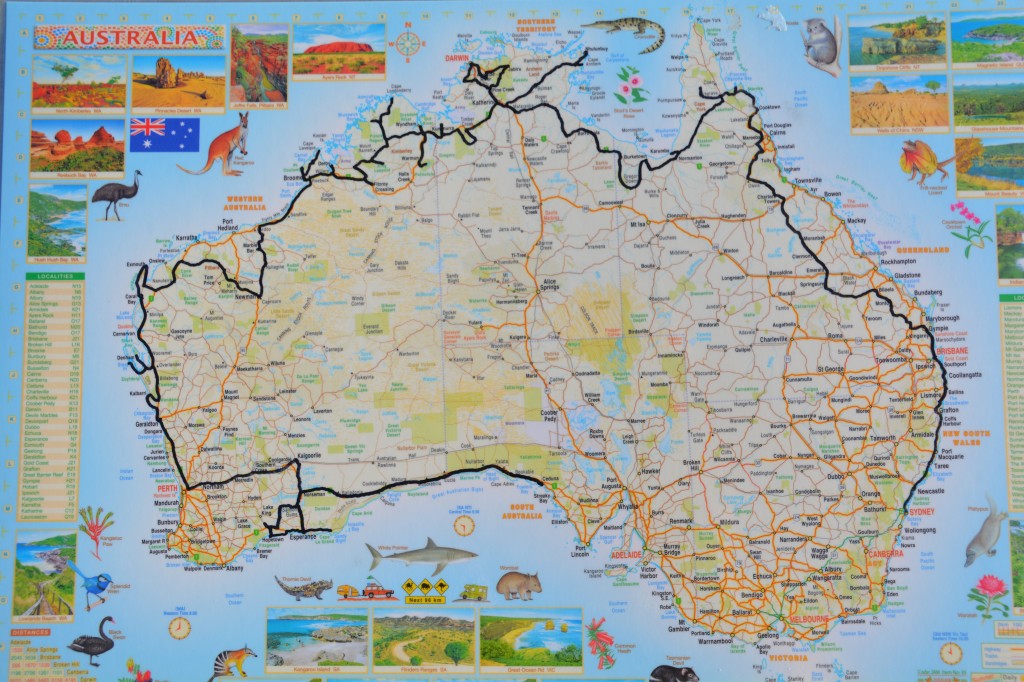
Our sophisticated map shows where we are after crossing the Nullarbor along the southern coast of Australia

